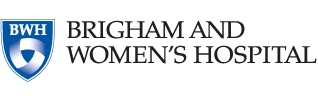Humacyte's HAV for Femoro-Popliteal Bypass in Patients With PAD
| Status: | Recruiting |
|---|---|
| Conditions: | Peripheral Vascular Disease |
| Therapuetic Areas: | Cardiology / Vascular Diseases |
| Healthy: | No |
| Age Range: | 18 - 85 |
| Updated: | 1/19/2019 |
| Start Date: | December 20, 2016 |
| End Date: | December 2023 |
| Contact: | Angela Rose, MBA |
| Email: | rose@humacyte.com |
| Phone: | 919-313-9633 |
A Phase 2 Study for the Evaluation of Safety and Efficacy of Humacyte's Human Acellular Vessel for Use as a Vascular Prosthesis for Femoro-Popliteal Bypass in Patients With Peripheral Arterial Disease
This study will evaluate how well Humacyte's Human Acellular Vessel (HAV) works when
surgically implanted into a leg to improve blood flow in patients with peripheral arterial
disease (PAD). This study will also evaluate how safe it is to use the HAV in this manner.
surgically implanted into a leg to improve blood flow in patients with peripheral arterial
disease (PAD). This study will also evaluate how safe it is to use the HAV in this manner.
This is a prospective, open label, single treatment arm, multicenter phase 2 study to
evaluate the safety and efficacy of the HAV in patients with PAD undergoing femoro-popliteal
bypass surgery. The primary objective of this study is to evaluate the safety and
tolerability of the HAV in these patients and to determine the patency of the Humacyte HAV at
12 months post-implantation. The secondary objectives of this study are to further assess
safety in terms of PRA response, and to determine the rates of HAV interventions required to
keep the HAV patent. There is no formal hypothesis testing planned; the study involves only a
single, open-label treatment group.
evaluate the safety and efficacy of the HAV in patients with PAD undergoing femoro-popliteal
bypass surgery. The primary objective of this study is to evaluate the safety and
tolerability of the HAV in these patients and to determine the patency of the Humacyte HAV at
12 months post-implantation. The secondary objectives of this study are to further assess
safety in terms of PRA response, and to determine the rates of HAV interventions required to
keep the HAV patent. There is no formal hypothesis testing planned; the study involves only a
single, open-label treatment group.
Inclusion Criteria:
1. Patients with disabling symptomatic peripheral arterial disease
1. Rutherford stage 4 or 5 who require femoro-popliteal bypass surgery or
2. Rutherford stage 3 with severe claudication (less than 50 yards AND causing
severe impairment of ability to work or undertake social activities)
2. Ankle - brachial index ≤ 0.6 in the study leg
3. Patient has failed adequate medical therapy which included
1. Exercise program
2. Smoking cessation therapy
3. Control of diabetes, hypertension and dyslipidemias
4. Antiplatelet therapy
4. Preoperative angiography or CT angiography shows superficial femoral artery occlusion
AND required Humacyte Human Acellular Vessel (HAV) length of ≤ 38cm. This imaging may
have been conducted up to 6 months prior to study entry provided that the patient's
symptoms have remained stable since that time
5. Preoperative imaging shows at least one below knee vessel patent to the ankle with
good runoff
6. Proximal HAV anastomosis is expected to be to the common femoral artery below the
inguinal ligament or to the superficial femoral artery
7. Distal anastomosis is expected to be to the popliteal artery above the knee
8. Femoral artery occlusion is not considered suitable for endovascular treatment; e.g.
long segment chronic total occlusion, previous failed stent or stent graft in the
superficial femoral artery, previous failed endovascular treatment where the lesion
could not be crossed
9. Autologous vein graft is not feasible in the judgment of the treating surgeon; e.g.
because all suitable veins have been used previously for coronary or peripheral
bypass, or pre-operative vein mapping shows inadequate length or quality of vein to
complete the planned bypass
10. Aged 18 to 85 years old, inclusive
11. Hemoglobin ≥ 10g/dL and platelet count ≥ 100,000/mm3 at screening
12. Other hematological and biochemical parameters within a range considered acceptable
for the administration of general anesthesia at screening
13. Adequate liver function, defined as serum bilirubin ≤ 1.5 mg/dL; and INR ≤ 1.5 at
screening
14. Able to communicate meaningfully with investigative staff, competent to give written
informed consent, and able to comply with entire study procedures
15. Life expectancy of at least 1 year
Exclusion Criteria:
1. Leg at high risk of amputation (SVS WIfI stage 4)
2. Recent clinically significant trauma to the leg receiving the HAV
3. Severe active infection (SVS foot infection grade 3) in the leg receiving the HAV
4. Distal anastomosis planned to a below knee artery
5. History or evidence of severe cardiac disease (NYHA Functional Class III or IV),
myocardial infarction within six months prior to study entry (Day 1), ventricular
tachyarrhythmias requiring continuing treatment, or unstable angina
6. Stroke within six (6) months prior to study entry (Day 1)
7. Chronic renal disease such that multiple administrations of contrast agents may pose
an increased risk of nephrotoxicity (eGFR<45mL/min)
8. Uncontrolled diabetes (HbA1c >10% at screening)
9. Treatment with any investigational drug or device within 60 days prior to study entry
(Day 1)
10. Cancer that is being actively treated with a cytotoxic agent
11. AIDS / HIV infection
12. Documented hypercoagulable state or history as defined as either:
1. a biochemical diagnosis (e.g. Factor V Leiden, Protein C deficiency, etc.) - OR -
2. a clinical history of thrombophilia as diagnosed by 2 or more spontaneous
intravascular thrombotic events (e.g. DVT, PE, etc.) within the previous 5 years
13. Spontaneous or unexplained bleeding diathesis clinically documented within the last 5
years or a biochemical diagnosis (e.g. von Willebrand disease, etc.).
14. Ongoing treatment with vitamin K antagonists or oral direct thrombin inhibitors or
factor Xa inhibitors (e.g. dabigatran, apixaban or rivaroxaban )
15. Previous arterial bypass surgery (autologous vein or synthetic graft) in the operative
leg
16. Stenosis of >50% of the inflow aortoiliac system ipsilateral to the index leg. Any
such stenosis must be corrected with angioplasty with or without stenting prior to, or
at the time of, HAV implantation
17. Active autoimmune disease - symptomatic or requiring ongoing drug therapy
18. Active local or systemic infection (WBC > 15,000/mm3)
19. Known serious allergy to aspirin
20. Any other condition which in the judgment of the investigator would preclude adequate
evaluation of the safety and efficacy of the Humacyte Human Acellular Vessel (HAV)
21. Previous exposure to HAV
22. Employees of the sponsor or patients who are employees or relatives of the
investigator
23. Pregnant women or women planning to become pregnant (Women of child bearing potential,
WOCBP, must use adequate contraception [hormonal or barrier method of birth control;
abstinence] for the duration of study participation; WOCBP defined as not sterile or
not > 1 year postmenopausal.)
We found this trial at
5
sites
Brigham and Women's Hosp Boston’s Brigham and Women’s Hospital (BWH) is an international leader in...
Click here to add this to my saved trials
Duke University Younger than most other prestigious U.S. research universities, Duke University consistently ranks among...
Click here to add this to my saved trials
Click here to add this to my saved trials
Click here to add this to my saved trials
Click here to add this to my saved trials

